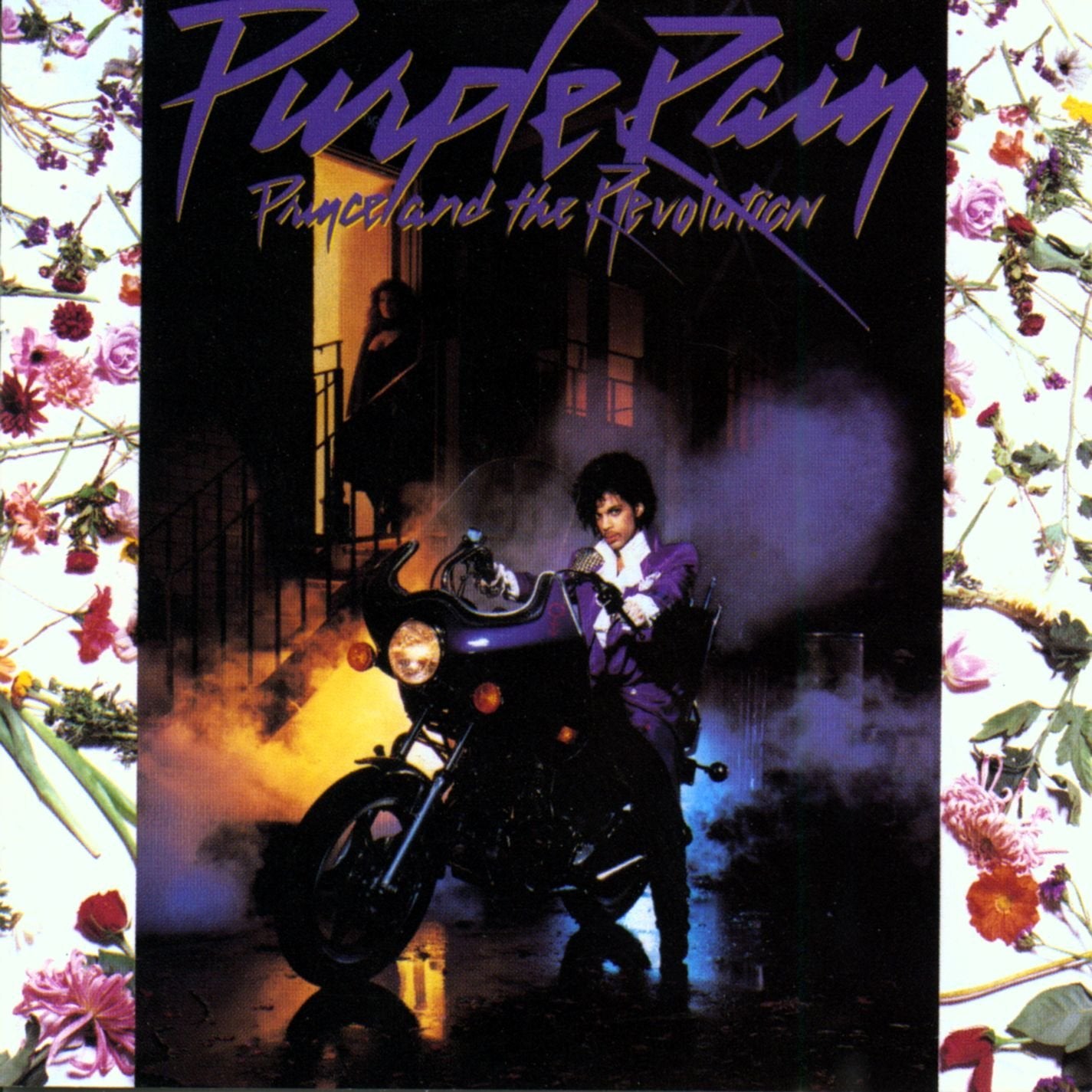壮大なサウンドトラックは、非常に特別な種類のアルバムです。偉大なサウンドトラックを考えると、特定のシーンにどれだけ曲が合うか、あるいはスコアが物語の不可欠な要素であったかを思い出します。観客の感情を巧みに操る成功を収めています。サウンドトラックは映画のためのミックステープのようなものだと考えています。大切な人のために作られたミックステープと同様に、曲の選択はキュレーターについての情報を明らかにします。サウンドトラックの場合、キュレーターは映画製作者や音楽スーパーバイザーであり、彼らが観客に考えてもらいたいことです。選曲は、優れた演技や対話が何を伝えられるか以上に、キャラクターやシーンに対する洞察を提供します。適切に配置されたスコアのキューは、恐れたり緊張したりする時が来たことを知らせてくれます。曲は、追跡が始まる前にアドレナリンを高めることができたり、コメディシーンのパンチラインになったりします。画面上で何が起こっていても、それはすべて音楽の中にあります。
素晴らしいサウンドトラックはたくさんあります。中には、メディアの枠を超えて、フォーマットに関係なく史上最高のものもあります。また、さまざまな理由で見落とされがちな素晴らしいサウンドトラックもたくさん存在します。では、これ以上の前置きはなしに、ヴィニールで所有すべき10のベストサウンドトラックをご紹介します。

Pretty in Pink
数多くの素晴らしいベストセラーサウンドトラックに満ちた1980年代において、Pretty in Pink (1986)は私たちが80年代で最もよく覚えていることを完璧に象徴しています:ハイスクール映画とクールな音楽。このサウンドトラックには、New OrderやThe Smiths、Orchestral Manoeuvres in the Dark (OMD)、INXS、Echo & The Bunnymenなどのアーティストが参加しており、今でもオルタナティブ/ニューウェーブ音楽の頂点とされるアーティストたちの真の名簿です。映画は、裕福な男、ブレインに恋をする労働者階級の少女、アンディと、彼らの友人たちの間に起こる軋轢についてです。
このアルバムの持続力を助けているのは、音楽が映画で見られるものとうまく組み合わさっていることです。その中には、OMDの「If You Leave」というラジオヒットが含まれ、LPのオープナーであり、輝くシンセ、切ない歌詞が詰まっています。映画の印象的なエンディングと組み合わさっています。感情の高まりの後には、スザンヌ・ヴェガの「Left of Center」というクールなリミックスが続き、アンディの外部者感を示します。アルバムは、映画の中でささやかに背景で流れるThe Smithsの「Please Please Please Let Me Get What I Want」で締めくくられます。映画の「ハッピーエンド」とされる場面を再現するのではなく、私たちはダッキーの片思いと、ある人々が必ずしも元々望んでいたハッピーエンドを手に入れられないことを思い出させられます。このように、このサウンドトラックは映画で聞かれる音楽を単に編纂する以上のものです。それは愛と人生、勝利と敗北の完璧なミックステープです。

Black Swan
Black Swanはダーレン・アロノフスキー監督によるダークでひねくれた映画で、ナタリー・ポートマンが完璧に演じるニーナという緊張した若い女性が、Swan Lakeでついにスターのバレリーナになる機会を与えられます。彼女自身の完璧主義的傾向と過保護な母親からの大きなストレスの中で、その役は彼女を限界を超えてしまいます。アロノフスキーの全てのフィーチャー映画のスコアを作曲したクリント・マンセルは、彼の優れたスコアのためにオスカーにノミネートされませんでしたが、映画スコアの最優秀アダプテーション賞のためのアワードがあったら、彼は間違いなくダントツで勝つでしょう。この映画は、Swan Lakeのプロダクションについてで、もちろんチャイコフスキーの素晴らしいバレエスコアがフィーチャーされています。マンセルはこの音楽を取り入れ、オリジナルのキューやパッセージを驚くほどシームレスに融合させ、美しくも悪夢的で、親しみやすくもオリジナルなものを創造し、このバレリーナの狂気への堕落の物語を強化しています。

Superfly
カーティス・メイフィールドは、1972年の映画Superflyのサウンドトラックを作曲し演奏した時、すでにインプレッションズとの仕事や自身のソロ活動で確立された録音スターでした。彼の社会的に意識の高い歌詞で知られるサウンドトラックは、犯罪的なライフスタイルを賛美しているように見える当時の他のブレックスプロイテーション映画と共に、映画のプロットに対する対比を提供します。ゴードン・パークス(Shaftの監督)によって監督されたこの映画は、ビジネスを辞めることを望むロナルド・オニールが演じるドラッグディーラーという役柄を描いています。彼は自分が望む生活を送るためにお金を稼ぎ enough になったら、道を外れて生きたいと考えています。
オニールのキャラクターが自ら選んだ職業の強力な人間として確立されていく様子を見ていく中で、メイフィールドの歌詞はそのライフスタイルの魅力を挑戦しています。「Pusherman」のような曲は、薬物販売者が彼らに依存する人々をどう抑圧するかを語ります。ヒット曲「Freddie’s Dead」は、借金を返済するために取引を余儀なくされた中毒者のフレディの物語を伝えています。映画で聞かれる曲の主にインストゥルメンタルバージョンで、歌詞の影響は、アルバムを再生するまで実際には聞かれません。素晴らしい「Superfly」で終わると、レコードをひっくり返して再び再生したくなるでしょう。

Saturday Night Fever
Saturday Night Feverのサウンドトラックは、1977年にリリースからわずか2ヶ月でプラチナになり、2年間チャートに留まり、史上最も売れたアルバムの一つであり、最初のサウンドトラックでグラミーのアルバムオブザイヤーを受賞しました。だから、アルバムはリリース時、非常に大きなものでした。サウンドトラックからの6曲のシングルもチャートでトップを飾り、その音楽は逃れられないものでした。
ビージーズのポップの天才は、「Stayin’ Alive」、「How Deep Is Your Love」、「Night Fever」、「More Than a Woman」、「You Should Be Dancing」といったヒット曲で否定できません。彼らは変革の時代にバンドであり、音楽がディスコ/ポップに進化し始めるちょうど良い時期に映画に楽曲を提供するよう頼まれました。彼らはまた、ヨヴォンヌ・エリマンの「If I Can’t Have You」も書きました。映画は、彼の仕事を嫌うブルックリン出身の若者トニー(ジョン・トラボルタ)の成長物語で、両親と暮らし、彼と彼の友達がディスコに行く土曜日の夜だけに輝くことができます。料理はトニーが求めるより良い生活の輝きと光を象徴しており、実際にバンバン鳴る音楽です。ビージーズの「Stayin’ Alive」のオープニングノートから、トランプスの10分以上のエピック・クローザー「Disco Inferno」まで、あなたはパートナーを見つけてダンスフロアに飛び込むのが待てなくなるでしょう。

Tron: Legacy
ダフト・パンクとトロン。これは天に作られた組み合わせです。トロン:レガシー (2010)は1982年のトロンの続編で、元雇い主のメインフレームにダウンロードされたケビン・フリンの物語を続けます。彼は、コンピュータプログラムがサイバースペースにおいて生きた存在として存在することを発見します。続編では、トロンのイベントから数年後にフリンが行方不明になり、彼の息子サムが不思議なメッセージを調査することになり、父が作成した仮想世界に移動します。
ビニールバージョンは次の2つの理由で素晴らしいです:1) それはフリッキングトロンであること、2) スコアの異なる小売店やCDバージョンに独占的だった7つのボーナストラックを得ることができます。したがって、あなたはスコアとこれらのボーナストラックを一つの物理的なパッケージで手に入れます。それは本当の映画スコアで、英雄的でダークなテーマに満ちています。ダフト・パンクはオーケストラと電子要素を組み合わせることで自らに挑戦し、オーケストラは映画の仮想現実の世界の壮大さを引き立て、電子音楽は関係する技術を思い起こさせます。このアルバムを単独で聴くのは、光の風景と脈動する深淵に満ちた環境を通過するようなもので、戻りたくなくなるでしょう。

The Mack
The Mackのサウンドトラックは1973年にモータウン・レコードからリリースされました。ウィリー・ハッチによって作曲され演奏され、彼はその時まで別のレーベルでいくつかのソロ活動を行った後にモータウンに移り、ジャクソン5やマーヴィン・ゲイなどのアーティストのために曲を書いたり共同作曲したりしてから、自身のアルバムをリリースしました。映画にはマックス・ジュリアン、リチャード・プライヤー、ロジャー・モスリー(マグナムP.I.のT.C.)が共演しますが、映画の脚本は不均衡に苦しんでいますが、ハッチのサウンドトラックは引き続き素晴らしいソウルのコレクションとして支持されています。
LPは「Vampin」と「Theme of the Mack」の力強いスタートで、最近出所した犯罪者が最大で最高のポン引きになるというストーリーの設定を行います。モータウンアーティストとして、ハッチはアルバムに70年代のモータウンの特長的なサウンドを与え、素晴らしいビートとスムーズなボーカルが加わります。ハッチは、その後、「I Choose You」というセクシーなR&Bナンバーに落ち着きます(これはUGKとアウトキャストによる画期的な"Intl Players Anthem"の基盤となります)。サイド2の「Slick」や「Brother’s Gonna Work It Out」は、当時R&Bチャートでヒットしました。その後者はPublic Enemy、The Chemical Brothers、Chance the Rapperなど多くのアーティストによってサンプリングされカバーされ、素晴らしいアルバムの締めくくりとなります。70年代のブレックスプロイテーション映画の中で、The Mackはあまり思い出されていないかもしれませんが、そのサウンドトラックは認められるに値します。

City of God
City of Godは、リオデジャネイロのシティオブゴッド郊外で成長する若者たちを描いた2002年の犯罪ドラマで、主にロケットというスラムに住む写真家の視点から語られます。彼は犯罪者になりたくないのです。映画は60年代から80年代初頭にかけて設定され、リオのスラムにおける麻薬ギャングの成長を示し、暴力を衝撃的に描きつつも、讃美することはありません。数多くの映画賞にノミネートされ、受賞もしており、過去15年間で最もハードヒットなギャング映画の一つです。
アントニオ・ピントとエド・コルテスによるオリジナル音楽と共に、ブラジルのサンバ、ファンク、サイケデリックな曲が映画の異なる時代を通じて私たちを導いていきます。より伝統的なサンバは、アーティストのカルトラの曲やウィルソン・シモナルの「Nem vem que não tem」で表現されています。70年代には、ハイウルの「Na rua, na chura, na fazenda」やラウル・セイシャスの「Metamorfose Ambulante」、ティム・マイアの「No caminho do bem」などのトラックにより、サンバはファンク的な影響を受けています。ピントとコルテスはこれらの影響を取り入れ、彼らの作品を通して暗くしています。音楽は感情的で、視聴者をロケットの世界に引き込むもので、そこでは腐敗が至る所にあり、生き残るために妥協が必要です。

Rushmore
Rushmore (1998)は、マックスというティーンエイジャーが彼の多くの課外活動を通じて自分の世界を操り、悲しいビジネスマン(ビル・マーレイ)と友達になり、私立学校の1年生の教師(オリビア・ウィリアムズ)に恋をするという成長物語です。ウェス・アンダーソンの古い映画に不慣れな人にとっては、Rushmoreは彼の2作目のフィーチャー映画で、彼の象徴的なスタイルを初めて見せ、俳優ジェイソン・シュワルツマン(マックス)を紹介し、ビル・マーレイのキャリアに新しい息を吹き込んでいます。それはまた、90年代から出た最高のサウンドトラックの一つを提供し、映画のストーリーにぴったり合うウィンジーなフォークとロック音楽を組み合わせています。
音楽は主に60年代のイギリスの侵略アーティスト(ザ・フー(「A Quick One While He’s Away」)やキンクス(「Nothing In This World Can Stop Me Worryin’ Bout That Girl」))の曲やキャット・スティーヴンス(「Here Comes My Baby」と「The Wind」)から成り立っています。映画の冒頭で、マックスと彼の多くのクラブが紹介されるシーンで流れるクリエーションの「Making Time」は、映画史上最も記憶に残るキャラクターの紹介の一つです。この比較的知られていないガレージロックの曲は、Rushmoreと永遠に結びついています。マーク・マザーズボーはバロック風のスコアパーツを作曲し、これらのウィンジーな間奏はマックスの風変わりさを強調し、キャラクターに内省的な側面を提供します。自我に満ちたティーンエイジャーが大人になり、他者を考えられるようになる物語とよく合う、力強くも感受性の高いサウンドトラックです。

La Planète Sauvage
1973年のLa Planète Sauvage(別名Fantastic Planet)は、ルネ・ラルー監督による、サイエンスフィクションの社会的コメントとサイケデリックなドラッグ映画が融合した奇妙なアニメーション映画です。アニメーションは、ほとんど本のようなイラストを使い、ストップモーションスタイルで、独自の異世界的な感覚を与えています。イーガムという植物の惑星には、ドラッグスという巨大な青い人型生物と、オムと呼ばれる人間が住んでおり、彼らは長い間、ドラッグスによってペットとして地球から連れてこられました。一部は野生動物として生きています。若いドラッグに母親が殺され、幼いオムは若いドラッグの女の子に見つけられ、世話され、成長し、ドラッグ文化と技術について学び、最終的に逃げ出し、この知識を他のオムに伝え、自由のための戦いが始まります。ユニークなアニメーションスタイルに独特なストーリーが加わり、印象的な映画が生まれますが、スコアが加わることで、完全に忘れられない作品になります。
歌手セルジュ・ゲンズブールの長年のコラボレーターであるアラン・ゴラゲールによって作曲されたこのスコアは、よく「ピンク・フロイドとシャフトの出会い」と表現されています。このフランスのポップ、宇宙時代のファンクの傑作は、狂ったビートやファンキーな「ワウワウ」エフェクトに満ちており、DJシャドウ、J・ディラ、マッドリブ(クアジモトのThe Unseenで)など多くのアーティストによってサンプリングされています。このアルバムのオリジナルプレスは非常にコレクタブルで、幸いにも2014年末に再発行されたため、より手頃な価格のコピーが出てきています。

Purple Rain
「親愛なる皆さん、私たちは今、人生というものを乗り越えるためにここに集まりました…」そのオープニングラインで、史上最も偉大な映画サウンドトラックの一つが始まります。プリンスの死について私たちが言わなければならなかったことについてはこちらをお読みいただければと思いますので、音楽に焦点を当てます。Purple Rainは1984年にリリースされ、プリンスの映画デビューを飾りました。それはその夏の大ヒットで、世界中のチャートでシングルがトップを飾り、何百万枚も売れ、史上最も売れたサウンドトラックの一つとなりました。それは2つのグラミー賞と、最後のオスカーである最優秀オリジナル映画スコアを受賞しました。
Purple Rainはプリンスの6枚目のアルバムで、彼のヒット作1999に続くものでした。彼はR&Bの聴衆にとってはかなり知られていましたが、Purple Rainは彼のクロスオーバーアルバムで、世界に彼がメガスターであることを証明したものでした。プリンスはファンク、ロック、ニューウェーブ、R&Bを巧みに組み合わせ、彼の驚くべきギター演奏技術を披露しました。このアルバムは素晴らしいものです。私のお気に入りは「Let’s Go Crazy」で、楽しいストリングス/シンセの「Take Me With U」、美しいスローバーンの「The Beautiful Ones」、ファンキーなロックの「Computer Blue」、そしてラウンジの「Darling Nikki」と続きます。続いて、どのレコードよりも素晴らしい側面2が続きます。「When Doves Cry」、「I Would Die 4 U」、「Baby I’m A Star」、そしてエピックなクロージャー「Purple Rain」です。
Marcella Hemmeterはフリーランスのライターで、カリフォルニア出身のメリーランド州在住の非常勤教授です。締切に追われていないときは、近くにタマレリアがないことをしばしば嘆いています。











